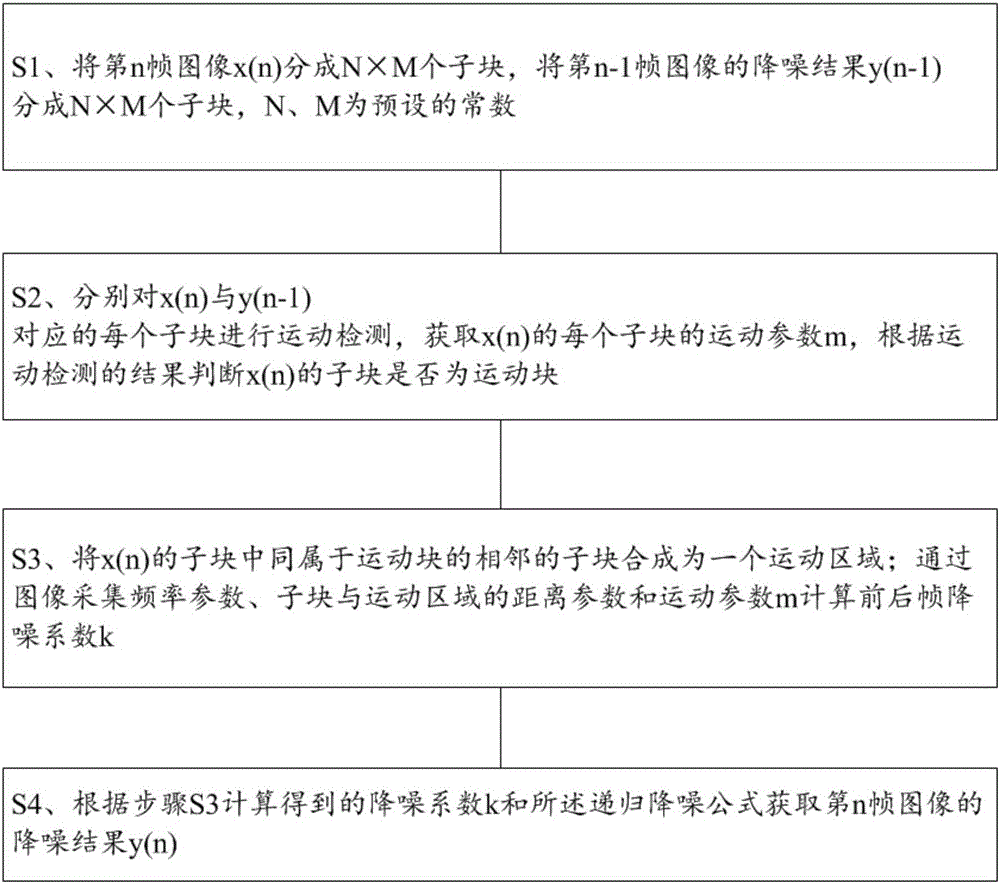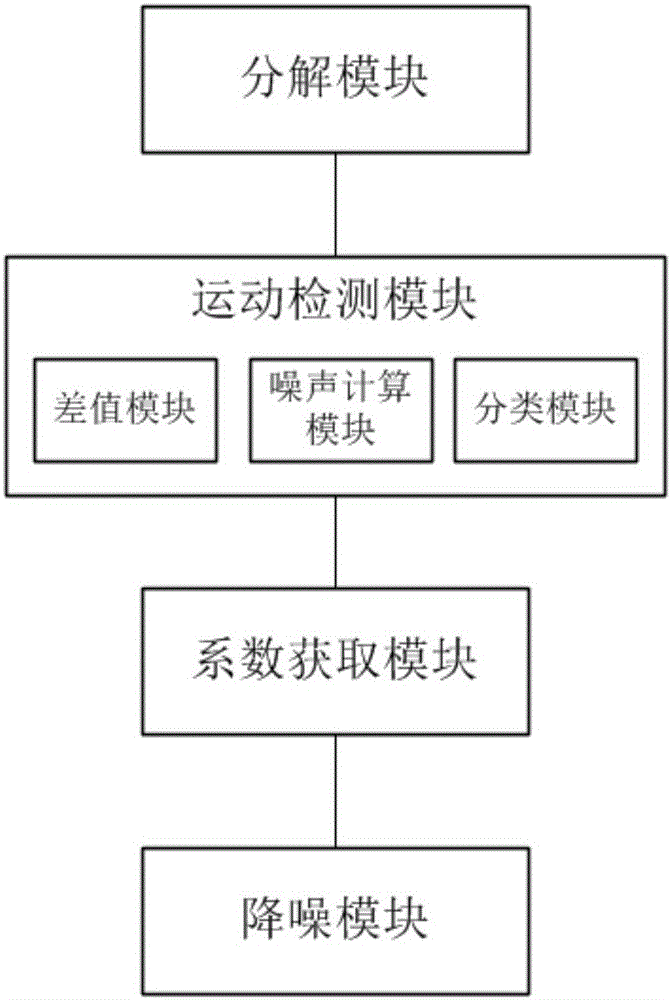Image blocking adaptive recursion noise reduction method and device
An adaptive recursion and image segmentation technology, applied in the field of image processing, can solve the problems of noise difference, reduce the noise reduction level of the whole image, and the whole image cannot achieve the noise reduction effect, so as to achieve the refinement of the corresponding relationship and improve adaptive effect
- Summary
- Abstract
- Description
- Claims
- Application Information
AI Technical Summary
Problems solved by technology
Method used
Image
Examples
Embodiment 1
[0043] Such as figure 1 As shown, the present invention provides a kind of image segmentation adaptive recursive denoising method, comprises the following steps:
[0044] S1. Divide the n-th frame image x(n) into N×M sub-blocks, divide the noise reduction result y(n-1) of the n-1-th frame image into N×M sub-blocks, and N and M are preset constants ;
[0045] x(n) and y(n-1) satisfy the recursive noise reduction formula y(n)=(1-k)×x(n)+k×y(n-1), where y(n) is the nth The noise reduction result of the frame image, k is the noise reduction coefficient;
[0046] In step S1, for the first frame of image, that is, when n=1, it is necessary to calculate the variance of each sub-block in x(n), and set the initial value of the noise reduction coefficient k according to the variance, 0≤k≤1.
[0047] S2. Perform motion detection on each sub-block corresponding to x(n) and y(n-1), obtain the motion parameter m of each sub-block of x(n), and judge the sub-block of x(n) according to the ...
Embodiment 2
[0071] Such as figure 2 As shown, the present invention provides an image block adaptive recursive noise reduction device, comprising:
[0072] The decomposition module is used to divide the nth frame image x(n) into N×M sub-blocks, divide the noise reduction result y(n-1) of the n-1th frame image into N×M sub-blocks, and N and M are pre- set constant;
[0073] The motion detection module is used to perform motion detection on each sub-block corresponding to x(n) and y(n-1), obtain the motion parameter m of each sub-block of x(n), and judge x( Whether the sub-block of n) is a motion block;
[0074] The coefficient acquisition module is used to synthesize the adjacent sub-blocks belonging to the motion block in the sub-block of x(n) into a motion area; it is calculated by the image acquisition frequency parameter, the distance parameter between the sub-block and the motion area and the motion parameter m The noise reduction coefficient k of the front and back frames;
[00...
PUM
 Login to View More
Login to View More Abstract
Description
Claims
Application Information
 Login to View More
Login to View More - R&D
- Intellectual Property
- Life Sciences
- Materials
- Tech Scout
- Unparalleled Data Quality
- Higher Quality Content
- 60% Fewer Hallucinations
Browse by: Latest US Patents, China's latest patents, Technical Efficacy Thesaurus, Application Domain, Technology Topic, Popular Technical Reports.
© 2025 PatSnap. All rights reserved.Legal|Privacy policy|Modern Slavery Act Transparency Statement|Sitemap|About US| Contact US: help@patsnap.com


